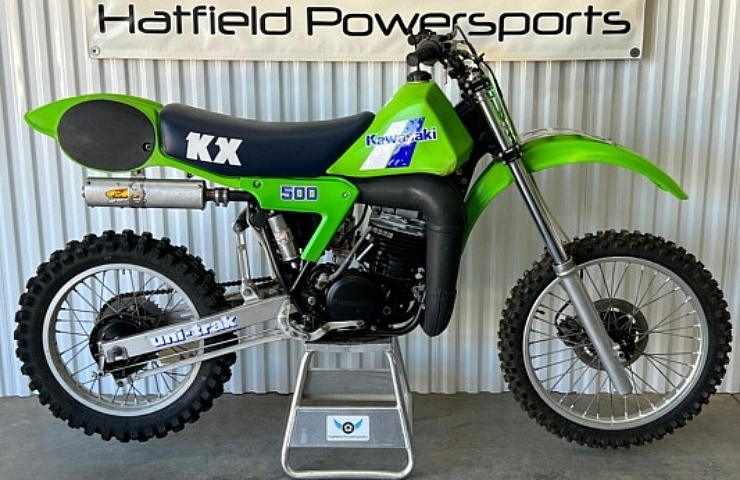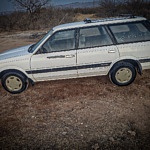Kawasaki’s Turbulent Open-Class History
Kawasaki’s venture into the motocross open class began in 1973. From there, the company introduced several limited-production runs, skipped model years, and clean-sheet models. During this time, the displacement went from 450cc in 1974 down to 400cc (1975-76) and back up to 420cc (1980-81) as the company struggled to come up with an ideal powerhouse for the yet-to-be-defined open class.
Motocross production was rapidly evolving, and Kawasaki needed help to keep up. But the ever-determined green team skipped the 1982 model year altogether for the open class (as it did in 1978-79), pulled out a clean sheet, and came out with the all-new 1983 Kawasaki KX500. It was Kawasaki’s first 500cc two-stroke.
The all-new frame and chassis—constructed with more aluminum—were built lighter and stronger. The new engine, an 86mm square two-stroke (equal bore and stroke), produced more power than its predecessors, which the media had ridiculed.
Despite its best efforts and the heavily redesigned model in ‘83, the Kawasaki KX500 was still not a strong contender. Several magazines reported stock KX500 test bikes blowing their top ends.
These problems explain why the revised 1984 KX500 didn’t make its way into many magazines or shootouts. Kawasaki opted to keep its open-class contender away from the media. To this day, you won’t find many reviews of this historic 1984 Kawasaki KX500.
A Long List of Innovations
Despite criticism, the Kawasaki KX line introduced several industry firsts, including:
- UniTrak rear suspension system
- First-ever front disc brake
While this platform in the KX500’s sordid history only lasted two years, the 1984 model represents the earliest years of Kawasaki’s historic 500cc development. It can be the first true refinement-year model; the ‘84 received several vital upgrades from the all-new ‘83.
Upgrades for 1984
A combination of refinements addressed the engine issue to help the 499.6cc two-stroke powerhouse run smoother and more reliably. Chassis revisions provided a smoother ride, though handling was still not this KX’s forte.
Changes included:
- All-new flat slide Mikuni carburetor
- Redesigned head with a twin-plug design
- Lower engine compression
- New 43mm fork and refined shock
- Revised bodywork for narrower ride position
- Blue seat
Distinguished by the funky rear fender, which oddly incorporates the rear number plate, the ‘83/84 KX500 is a short-lived yet significant platform within Kawasaki’s open-class history. The 1984 model was also the last year to use air cooling. The 1985 model year brought yet another clean-sheet design and the first of the liquid-cooled generation.
Shop now for Kawasaki KX




